The bees recognize their queen by her scent and they won't accept any new queen that easily, even if they don't have one.
This is why placing a new queen in the beehive should be done carefully. The caged queen should first be put in the beehive and then released after a day or two, by then the bees should be familiar with her scent.

The new queen bee should be put in the beehive only if you are sure that the colony is without a queen, otherwise the bees will kill her or there will be a fight between new and the old queen.
If you suspect that your beehive is queenless, but you are not absolutely sure, go to: Queenless Hive.
The bee colony should be queenless at least 24 hours before new queen introduction.
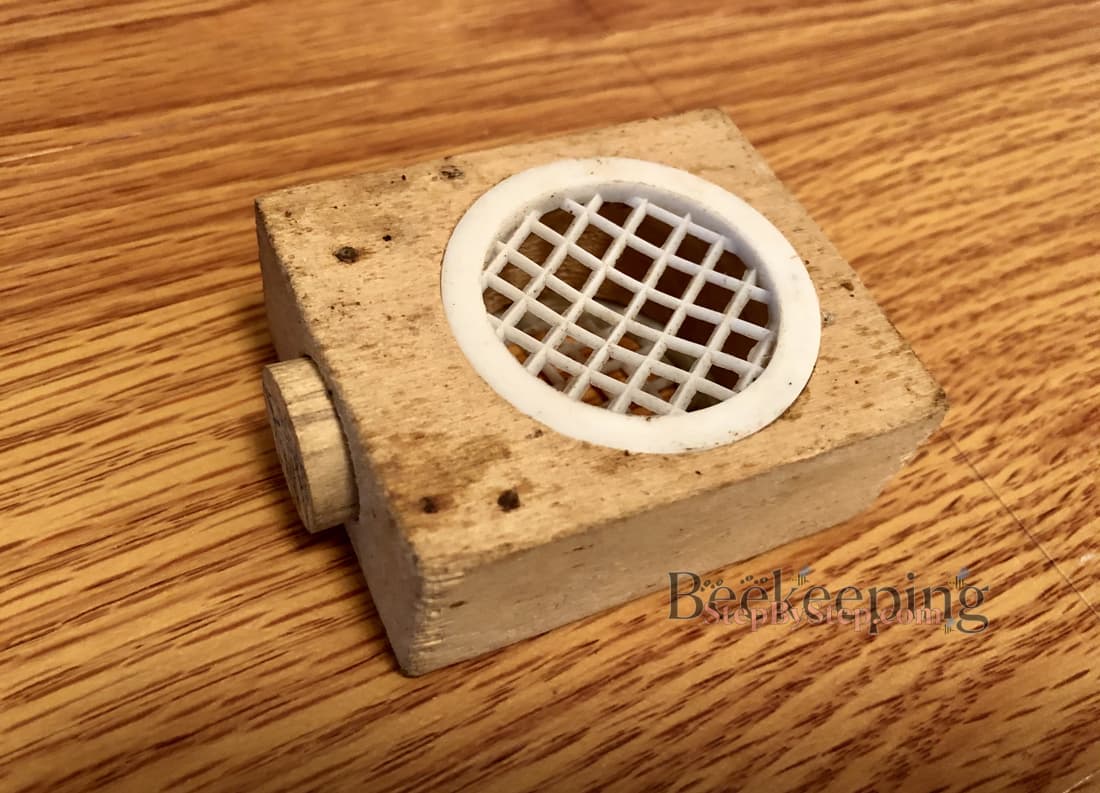

Accepting the new queen bee
There are a lot of things that influence whether the honey bee colony will accept the new queen or not:
![]() Honey flow – the bees are more likely to accept the queen if the honey flow is good
Honey flow – the bees are more likely to accept the queen if the honey flow is good
![]() Weather conditions – the bees will rather accept the new queen if the weather is nice and warm than if it is cold and rainy
Weather conditions – the bees will rather accept the new queen if the weather is nice and warm than if it is cold and rainy
![]() The longer the bees are without a queen, it becomes harder for them to accept a new one
The longer the bees are without a queen, it becomes harder for them to accept a new one
![]() Younger bees will happily adopt the new queen, but the older ones much harder, etc.
Younger bees will happily adopt the new queen, but the older ones much harder, etc.
Advertisement :
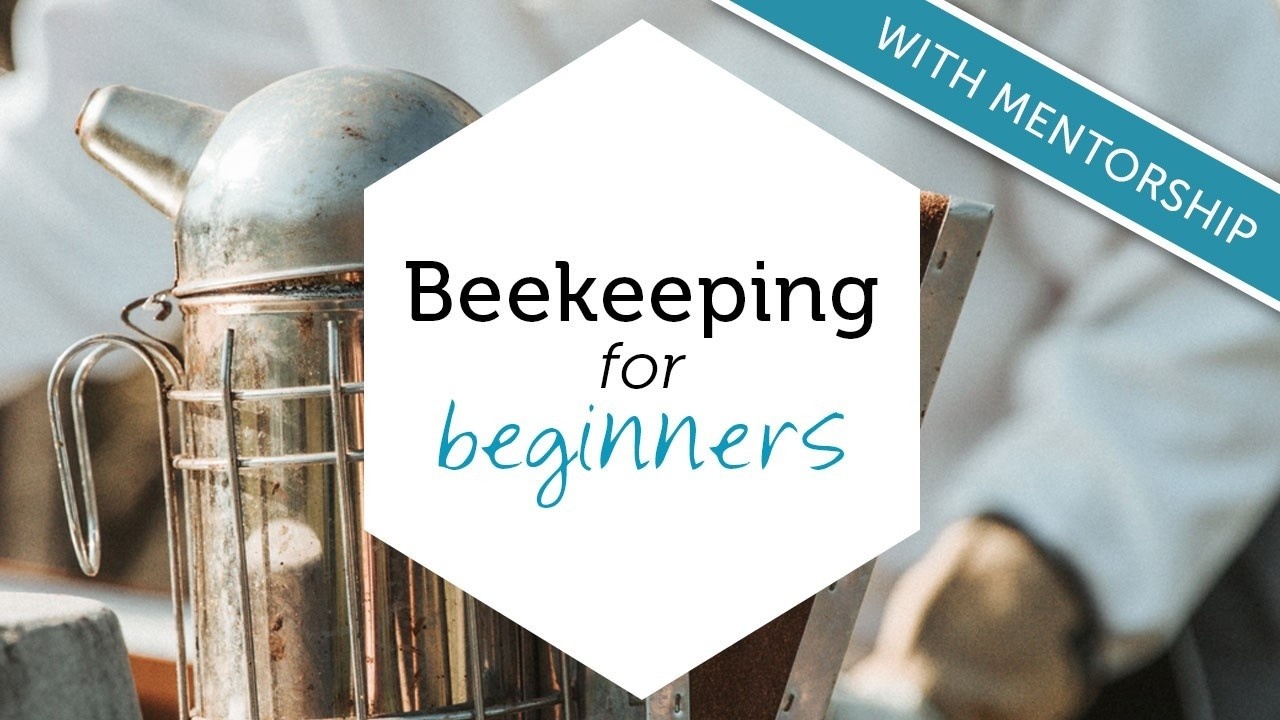
Beekeeping for Beginners
Everything you need to know!
This is a full beekeeping course for beginners.
If the bees don't accept the new queen bee
In order for the honey bee colony to accept the new queen, a lot of conditions need to be met. However, you cannot control all of them. Even if you do everything you're supposed to do, it's possible that the queen won't be accepted. Don’t let that discourage you.
If the bees don't accept the new queen, you can try once more to introduce another new queen in that bee colony, but if that fails again you should combine that colony with another good, queenright colony.
Instructions for combining two colonies: Combining Two Colonies.
If the honey bee colony is too long without a queen
In this case, it may be hard for bees to accept a new queen. So, before you put a new queen into the beehive, in order to increase chances for her acceptance and to be sure that the hive is really queenless, you can perform this steps:
1If the colony has been queenless for some time, a frame of a young brood may be added to it. Detailed steps - Adding Young Brood Frame.
2When the bees begin making queen cells (in 3-4 days) destroy all of them.
3Then add a new queen - you’ll find detailed instructions below.
A queen in the cage closed with sugar candy
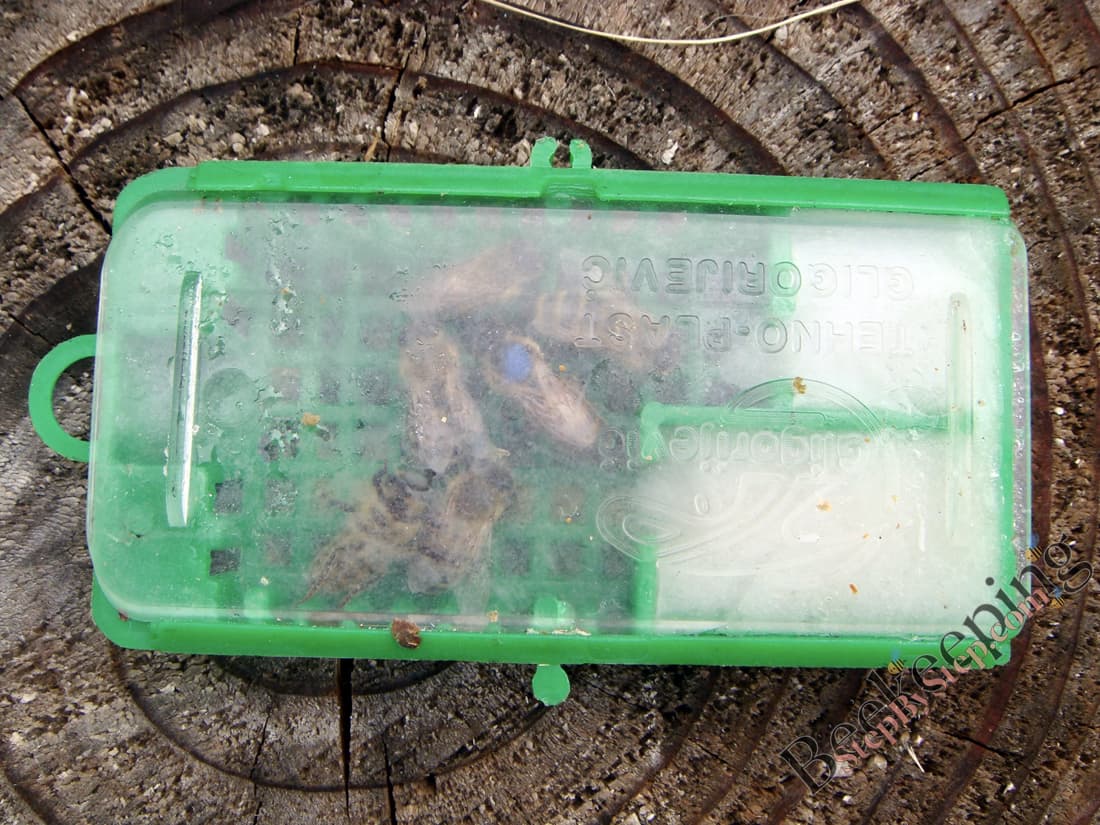
If you are buying a queen, the queen cage is usually closed with sugar candy and over it there is a cork which you should take off before you put the cage in the beehive. The bees will eat the sugar in a day or two and thus free the queen.
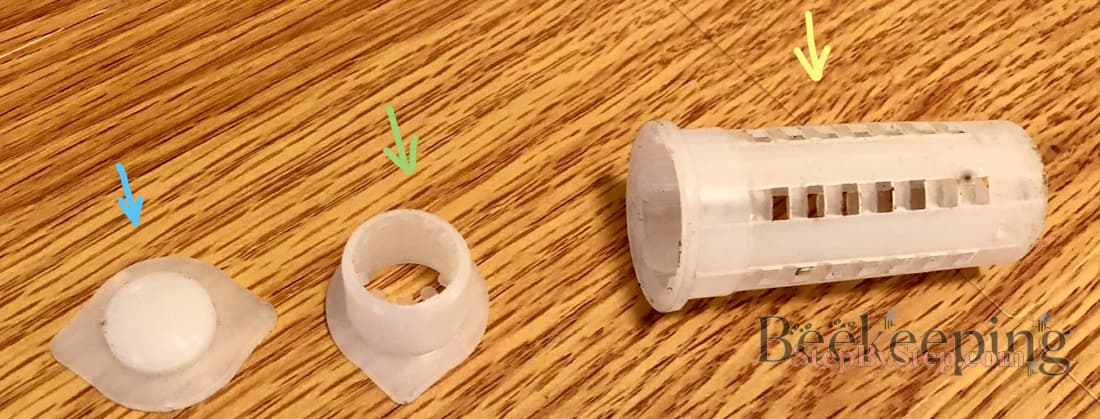

Introducing the queen – steps
Beekeeping equipment and supplies you will need:
- Caged mated queen
- Beekeeping smoker
- Hive tool
- Beekeeping suit
- Beekeeping gloves
Introducing the new queen bee in the beehive – step by step:
☀️ Day 1:
1Open the beehive.
2Put the cage with the new queen in the brood box.
1If the cage is closed with sugar candy, the cork that covers it should be opened up – the bees will free the queen by themselves.
2Wedge the cage with the queen between the frames in the center of the brood.
3Close the hive.
If the cage is closed with sugar candy - don't forget to take off the cork before putting the cage in the hive, so the bees can free the queen by themselves.
If the cage isn't closed with sugar candy - don’t take off the cork right away. First put the closed cage in the hive and the next day open the cage and release the queen into the hive.
☀️ The next day:
If the cage isn't closed with sugar candy, you need to open the cork after at least 24 hours and release the queen.
1Open the hive.
2Release the queen.
1Pick up the cage and tilt it so that the opening is turned down and leans against the frames.
2Then carefully remove the cork and
3Wait for the queen to come out. The queen bee will come out and quickly hide between the frames
3Close the beehive.
☀️ After 2-3 days you can check whether the new queen started laying eggs:
1Open the hive.
2Pick up the frame from the middle of the brood box - from where you released the queen - and check if there are eggs in honeycomb cells.

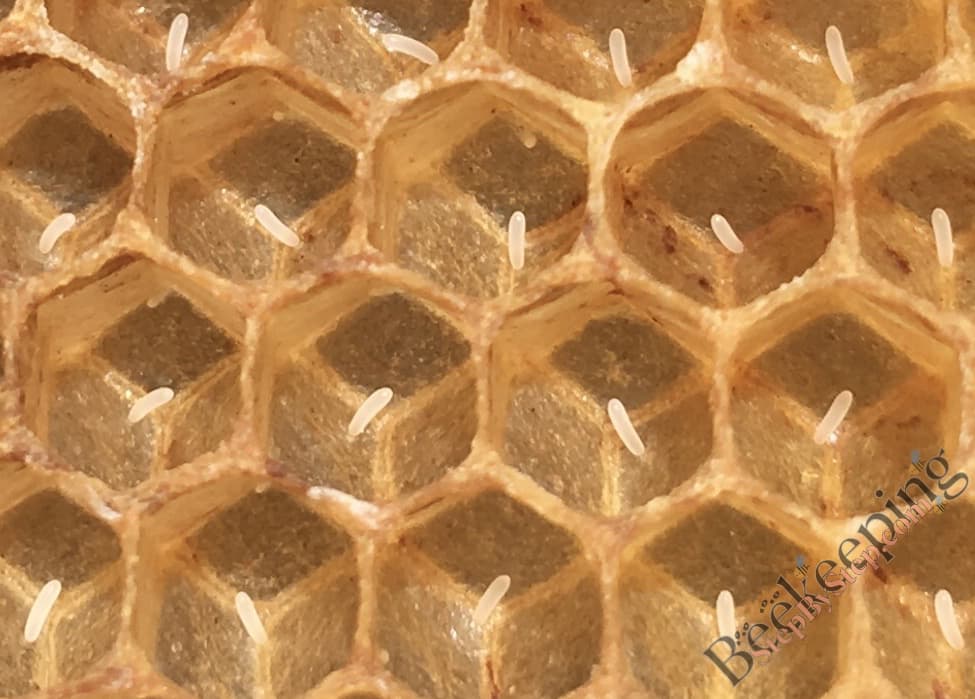
![]() If there are eggs:
If there are eggs:
1This means that the colony accepted new introduced queen and she started laying eggs, so put back the frame on its place. There is no need for further inspection on other frames at this moment (until next inspection) and disturbance of the bees and the new queen.
![]() If there are no eggs:
If there are no eggs:
1Check the other frames and as soon as you find eggs put everything back in it's place and close the hive.
2If there are no eggs on other frames too, repeat the inspection in a day or two.
3If there are no eggs even then and the bees are fanning (look: Queenless Colony Behavior - Fanning) - this means that something's wrong and that the new queen bee wasn't accepted.
If this happens you need to fix the problem as soon as possible or you’ll end up with laying workers. More info on laying workers - Laying Workers.
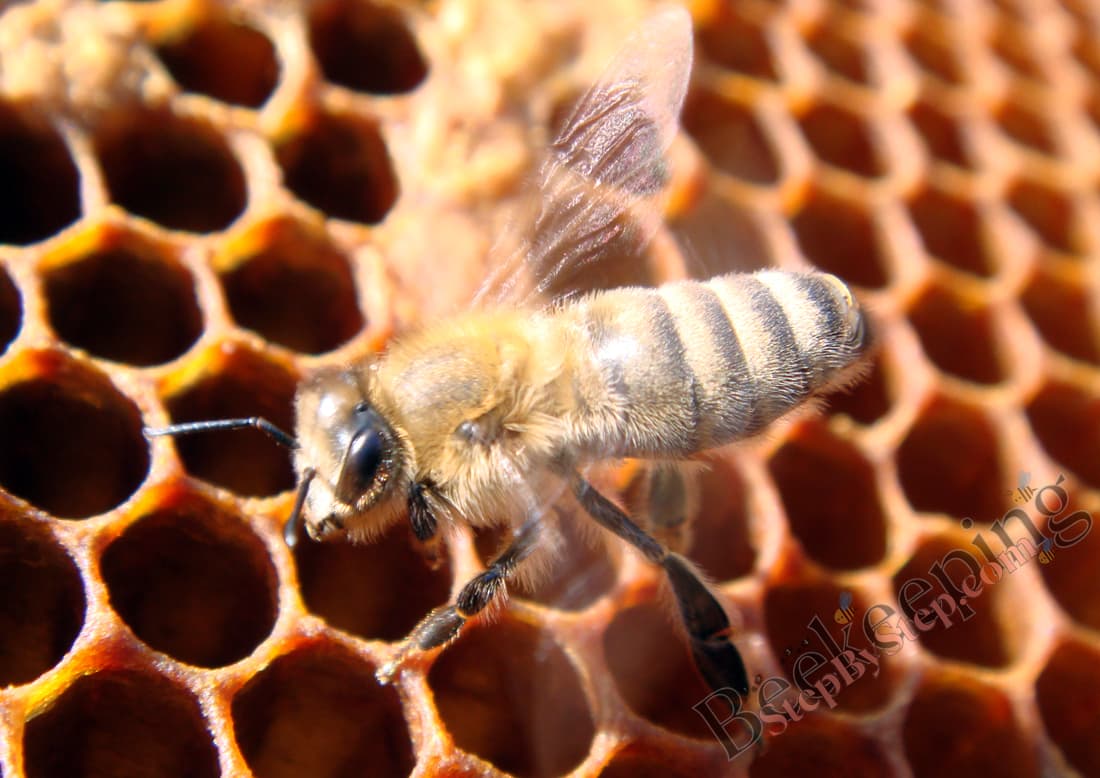
It can be hard for a beginner beekeeper who hasn't got much experience to notice the eggs, and therefore he can assume that there are none. However, in a few days the larvae will grow and they will be much easier to spot - if you have hard time finding the eggs, wait a few days and then see if there are larvae.

3Close the hive.
It can happen that the queen you bought is for some reason unsuitable for the bees - for example, the queen is of poorer quality (even if you can’t notice anything unusual about her). So even if the bees accepted her, they will before long make a supersedure queen cell and replace the bought queen bee with the one they made themselves. It’s completely fine and you don’t need to worry about that, just leave them do that.